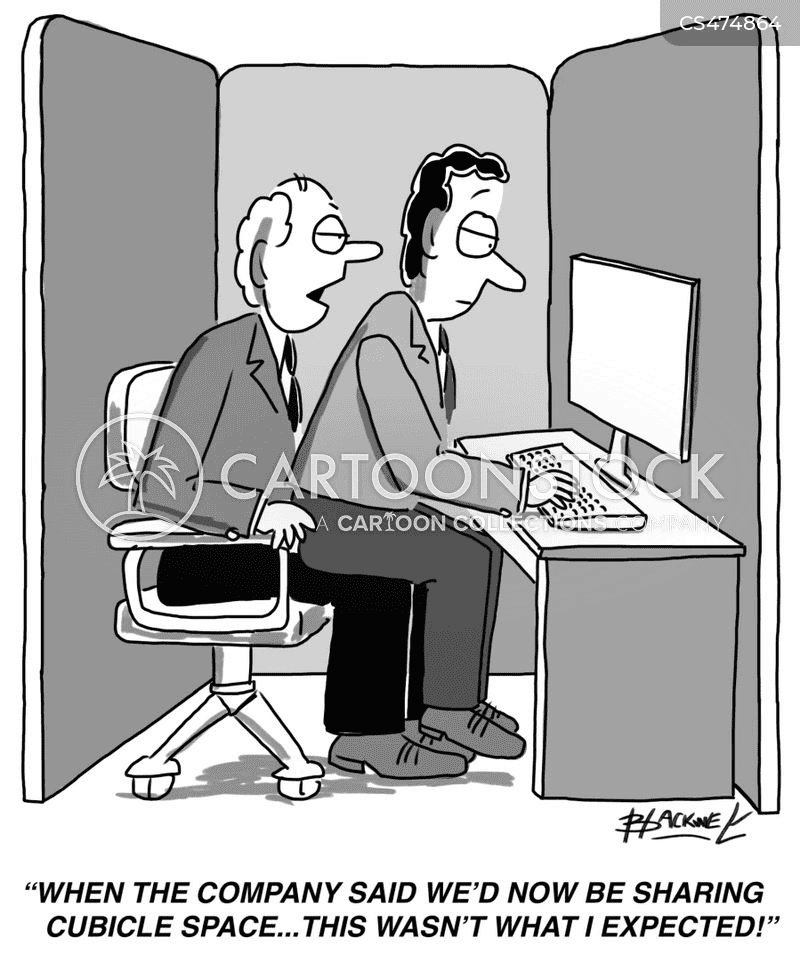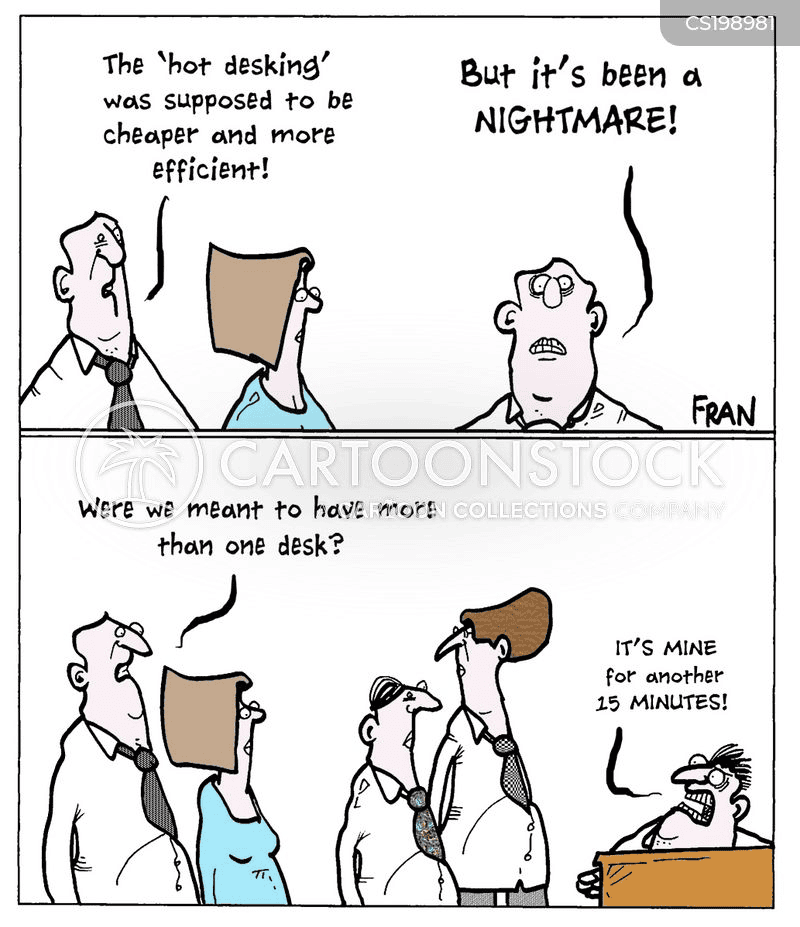Why Hot Desking Is “Hot” Right Now?

Summary: Hot desking is “hot” because it provides autonomy to employees, the autonomy of choosing their seats and workmates. Here is a detailed article on everything you need to know about it.
Are you heading back to the office after a long time? Do you want flexible seating options while there? Well, now you can, with hot desking. You can pick your work desk (a different place every day) instead of sticking to only one. In a shared or open office plan, hotdesking allows people to communicate and interact with others. This article will see the pros and cons, and how to start practicing this trend.
Pros Of Hot Desking
Many large organizations like Microsoft, Deloitte, Square, Citigroup, and others have introduced this plan in the workplace. Studies have shown that people are mostly satisfied with it. Here are some significant benefits of choosing hot desking:
Pick Thy Neighbor
We all have the experience of working with at least one noisy coworker, right? Previously, you could not move away in the fixed-desk model, even if you preferred a quiet area. But now, with hotdesking, you can pick a different spot, plug in, and work flexibly. Solopreneurs and freelancers are particularly fond of this idea.
Better Communication
If you are a business owner, you would want your employees to communicate better with one another. If your employee sits in a different place daily, they may meet from other teams and engage in conversation. People will be happy, as they can work and be mobile simultaneously.
Cleaner work desks
When you don’t have a fixed work desk, you will not leave any post-its, papers, or personal belongings behind. This means the next person gets a clean and organized work desk, a huge USP in a shared office space in Kolkata.
Cons Of Hot Desking
Obviously, not everyone will be a fan of hot desking, and there are genuine reasons for that. It may take time to adjust to it. Here are some other cons you need to consider:
Disrupts Routine
Sticking to a routine or a particular environment (personal space) can motivate some people to perform well. Hot desking disrupts that, and the thought of being removed from familiar faces may seem daunting and unsupportive to employees’ mental health. If an employee requires a workstation to do his job, he cannot move around that much, unlike others.
No Predictability
Once they reach the location, employees will only know where their seat is and who their desk neighbors are. If they arrive late, they may not get the “best” seats and may have to hunt down free space, as hot desking mainly works on a first-come-first-serve basis. This unpredictability can be stressful for some people.
How to Introduce Hot Desking?
Instead of just dumping the news that you are introducing hot desking, you can arrange meetings with your employees first. You have to make them excited and knowledgeable and answer their queries and apprehensions. You have to set a roadmap before fully utilizing the benefits. Here are some steps that should be included in the plan:
Consider The Floor and Desk Plan
Hot desking is all about space utilization, so, you should consider floor space. The information you collect during the first step will help you figure out how many desks you can provide, along with other amenities. You have to decide which areas will be open for everybody, quiet areas where a team can work together and collaborate, and which areas should be permanently fixed. If you want, this information can be shown on an interactive interface later on. Figuring out the analytics will help you better plan and minimize the costs of this system.
Use a Desk Booking System
Once you have all the data and analytics, it is time to introduce a desk booking system. In this way, you give your employees autonomy to choose where they can sit. Perhaps you can include an interface where an employee can see where his coworkers are seated in advance and book accordingly. This can avoid confusion and annoyance among employees, especially when multiple shifts and teams use the same desks.
You can provide a best practice guide on booking a desk, like how to do it, and how many days in advance they should do it, or cancel it. This way everyone will have a better user experience.
Collect feedback
When everything is in full swing, that is the time to see how your employees are feel about the new system. Are they facing any difficulty? If so, what are those difficulties (difficulty in booking, adjusting, working, or something else)? Depending on the situation, you will have to come up with feasible solutions.
Keep Desks Clean
This goes without saying; workplaces should be clean. If there is any protocol in the office (COVID protocols, for instance), they should be followed too. All these things will help employees feel more comfortable and safer with the system. Basically, what we are saying is that, as an employer, you need to manage the trend in the workspace.
Is Hot Desking the Right Choice For Your Organization?
The right answer to your question is it depends on a number of factors, such as.
“What is the working model in your organization (onsite, remote, or hybrid)? Are you planning to continue this model in the distant future?”
“Is it necessary to ensure inter and intra-departmental communication and cooperation?”
“Do your employees need maximum flexibility to work productively?”
If your answer to all these questions is yes then your organization will reap the maximum benefits of hot desking. But this is a huge cultural change and requires proper planning.
On the other hand, if handling highly sensitive, private information is your line of work, if handling highly sensitive, private information is your line of work, there are better solutions than this. Or an organization where fixed structural coordination is needed should not opt for this option.
If you are an entrepreneur (solopreneur), or a freelancer, you can still benefit from this model. You don’t have to commit long-term when you try hot desking in a shared office space. Unlike traditional workspaces, there is no rigidity in this model. But you can fight the “work from home” blues by staying close to other like-minded people. Also, you can learn a lot more from them and get networking opportunities.
Final Words
So what can we exactly deduce about hot desking? The trend offers multifold benefits to enterprise and small-scale businesses (including freelancers and solopreneurs). It can encourage employees to choose their seats, pick their neighbors, and work flexibly. This boosts communication and productivity within the organization and helps business owners to cut down operational costs. There are cons to this method, though. It can disrupt a routine and disrupt the working model (at least initially).
If you want to navigate these problems, sit down with your employees (more than once). Also, you need to lay out a solid plan, train your employees, and collect feedback when it is fully introduced. This includes considering the floor space, the number of desks, and other amenities to include in the package. We hope this article can help you with all the information you need before considering hot desking.
Are you unsure about how to begin hot desking, or rather where to begin? Are you looking for shared office space in Kolkata? Zioks is the answer to all your queries. Check out the solutions and pick one for your business today!







